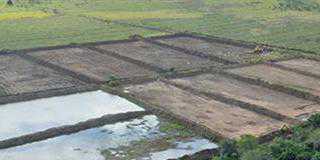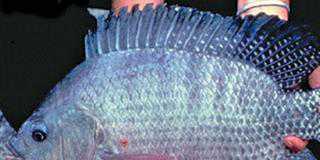Some 20 years ago, when people heard that I was involved in fish farming, they automatically assumed I was breeding trout and were somewhat taken aback when told that the farm raised tropical fish from Lake Malawi for the aquarium trade. The point is, aquaculture is a far more diverse activity than many realise, and also includes plants raised in water, as well as ‘aquaponics’, the culture of mutually beneficial fish and plants.
Scale ranges from small backyard set-ups to medium-size systems, often using tunnels to warm the water during winter, to full-scale commercial ventures producing many tons of fish. Some systems comprise more than 100 hothouse tunnels. Others have many hectares of ponds, although such farms are rare in Southern Africa.
Trout
The highly organised trout industry has been in existence in South Africa for more than 50 years. Many of the older trout farms are well known, and have been re-built several times over the decades as techniques have changed and evolved. Most are to be found in the Western Cape, KwaZulu-Natal and the Mpumalanga Highveld, all places where the cool water required for the fish is to be found. There are still openings for new trout farms, though, but marketing the product needs to be well-researched beforehand.

An industrial scale indoor tilapia farm. Gary Dalbock
Catfish
Our indigenous sharptooth catfish (Clarias gariepinus) enjoyed a brief period of ‘popularity’ during the 1980s when in-depth research into its culture was undertaken at Rhodes University and elsewhere. Many catfish farms were established, including a number of hi-tech set-ups imported from Europe – the infamous mega-fish systems. Most were expensive failures, and catfish farming never caught on. The main reason appeared to be marketing – or a lack thereof.
Catfish are very desirable food fish in countries such as Nigeria, whereas they aren’t highly regarded here. Local consumers needed to be ‘educated’, which didn’t happen. Ornamental fish farming, meanwhile, has typically been a small-scale industry, and is regarded by some scientists as the ‘Cinderella’ of aquaculture, with much potential. I’m not sure why.
Maybe it has something to do with that ‘machismo need’ to boast of the ‘tonnage’ produced, rather than its monetary value.
Several farms were set up in the 1990s, and most still exist. However, in times of recession, ornamental fish are regarded as a luxury, and this side of the industry is hard-pressed.
Tilapia
As regular readers of this column will know, tilapia has probably been one of the most talked about, yet least visible forms of fish farming in SA. For years, tilapia farmers here worked with poor quality fingerlings of mixed sex grown under unsuitable, often cool-water pond conditions using methods that had already failed elsewhere. Scant attention was paid to the advances in tilapia culture made in countries such as Israel and Taiwan, where nutritional requirements, sex reversal techniques and intensive culture systems were developed.
This information is now readily available and, with highly desirable fish like red tilapia, there’s no reason why tilapia culture should not be undertaken at many levels – from the backyard operator producing a few hundred kilos a year, to the commercial production of many tons. It’s also an activity suited to incorporation into other farm activities, thus diversifying your output.
Nicholas James is an ichthyologist and hatchery owner. Contact him at [email protected]. Please state ‘Aquaculture’ in the subject line of your email.













